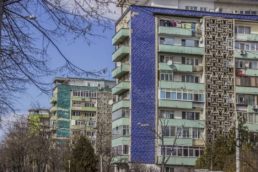‘Tiles and Tiles’are documenting the architectural practice of ceramic tile decoration in Romania — a trend which proliferated during the communist era.
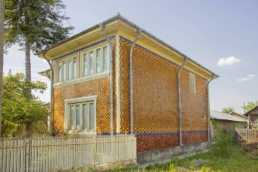
The project’s Instagram stands as a testament to the years that founders Roberta Curcă and Jakub Charousek have devoted to tirelessly sourcing, researching and photographing the pieces.
We caught up with the pair to learn more about what sparked their interest in the topic, and how famed Italian architect Giò Ponti played a significant role in Romania’s ceramic scenery.
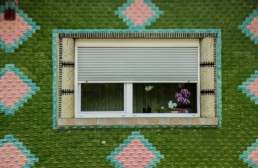
When did you start the project?
RC: The project began with a single tile, two years ago. It was a tile from a metro station that an artist friend had picked up from a pile of tiles which were being thrown out. I borrowed the piece from him to make a copy and from then on I started noticing them all around. Jakub was interested in them as well so we started to document them together.
How did the whole idea come about?
RC: It started in the studio, where I was working on a series of artworks inspired by the tiles. Discussing it with Jakub we decided there was a lot of photographic documentation of the tiles which would be great to showcase in an online setting. As he was already involved in the @protectpublicspace project (founded by the Czech Center), there was already a familiarity with instagram. So we started from that.
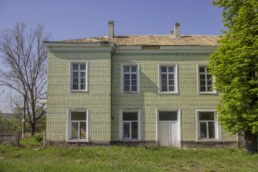
Did you notice that the tiles you found were concentrated in one specific region of Romania?
JCH: They can be found throughout the country, nevertheless there are places where they are more concentrated. For example in the south-western part there are villages full of houses decorated with these tiles.
There were a few factories specialized in making these tiles, however they are not necessarily ubiquitous in these areas. They are found more often in places which were obviously wealthier than the others, not necessarily because of industry, but because of the landscape, tourism as well as the proximity to the former Yugoslavian border.
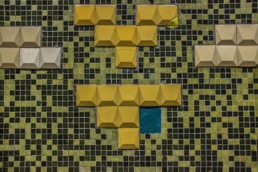
Can you tell us a bit more about the history of tile production in Romania? Why was there a surge during the communist era?
RC: The type of base-relief tile can be traced back to the Italian designer and architect Gio Ponti who designed a line of tiles for the Joo ceramic company in Milan between 1956 and 1957. Gio Ponti used this tile on the facade of buildings such as The San Francesco Church in 1961 and the Montedoria building in 1971, both buildings located in Milan. Other buildings include a private home in Caracas, Venezuela in 1957, Villa Namazee in Iran in the early 1960s, and the building for de Bijenkof (The beehive) department store in Eindhoven, the Netherlands, in 1969. Tiles were also used outside of Gio Ponti’s creations, appearing throughout Italy, even in cities such as Rome or Naples.
Gio Ponti’s tiles for Joo ceramic found their way to Romania as well. The reason for this can be found in the relationship between Romania and Italy in the second part of the twentieth century. Between 1948-1955 the relationship between the two countries was very conflictual, based on questionable diplomatic practices. However between 1955-1962 there was a period of reconciliation followed by a period of collaboration which started 1962-1965. This period was considered the starting point of not just fundamental diplomatic practices, but also of economic exchanges.
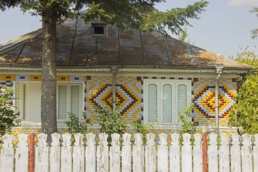
As opposed to say, decorative mosaics, do you think that tiles are ever ideological?
JCH: They do not present ideological symbols, however they would try to send the message that the Communist regime was doing well. In this sense they could be a façade for the discourse surrounding development and prosperity. Some of the buildings covered with these tiles were in fact built very badly and started to fall apart quite quickly.
Are there any efforts (by the government etc) to preserve the tiles?
JCH: Unless the building itself is important, then tiles themselves are not regarded as being important. In the past year there have been 2 buildings which have been demolished where the tiles were the most important element for their look.
RC: Otherwise there is Sala Palatului which contains flat tiles and has been declared a monument. Besides this there is a sensibility towards them from other sectors. For example, the material library, Mater, is located in an old factory which had these tiles inside, and the people working there acknowledged their importance by making copies out of different materials such as wood and plastic which replaced the fallen ceramic tiles.
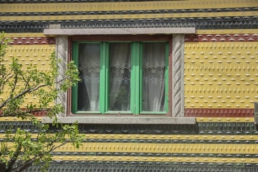
Why do you think that it is important to record, document, and preserve them?
RC: Since they are disappearing from the public space it can be an artistic way of preserving an era. Most of them were also inspired by the ones made by the Italian architect Gio Ponti and in a way, it’s interesting how these designer tiles ended up in Romania.
I saw that sometimes you have photos of yourself holding a tile next to the piece, why do you do this? do you remove these yourself? Do you keep them?
RC: The tiles photographed this way are the tiles which have fallen down from the buildings. There are many buildings in this state and usually the fallen tiles are discarded as rubbish. For example, in my hometown there are cemeteries of tiles next to the block buildings which are being renovated to the extent of removing 10 stories of tiles from the facades. Since there is obviously no regard for these pieces we decided to collect them when we can in order to showcase their variety in shapes and colors. Such an opportunity presented itself now with the exhibition at Ivan Gallery, where people can come and see all these pieces.
Some tile factories have closed down, can you explain why this is?
JCH: Many factories closed down after the privatization in 1989. Many were sold for close to nothing, they had bad management and could not adapt to the conditions of the market.
Can you tell us a bit about yourself and Roberta, your backgrounds and how they played a part in the projects formation?
RC: I studied art at the National University of Art in Bucharest where I took a course in socialist design and that is how I got interested in researching this kind of design. Because of art school I also became very interested in documentation as art which is something that fits very well in these projects.
JCH: I studied political science at University of Hradec Kralove in Czechia and I came to Romania during Erasmus where I started to collaborate with the Czech Center in Bucharest and to work with them on different projects such as Protect Public Space.
Do you have any future plans with the project? To create a book or a website?
JCH: We would like to make both a book and a website for this project and we are looking forward to it in the near future. We are inspired by projects such as Soviet Bus Stops by Christopher Herwig or Spomenik Monument Database by Donald Niebyl so we are looking forward to print a book about tiles.
Learn more about the ‘Tiles and Tiles’ project through their Instagram here and their most recent exhibition at Ivan gallery in Bucharest.
